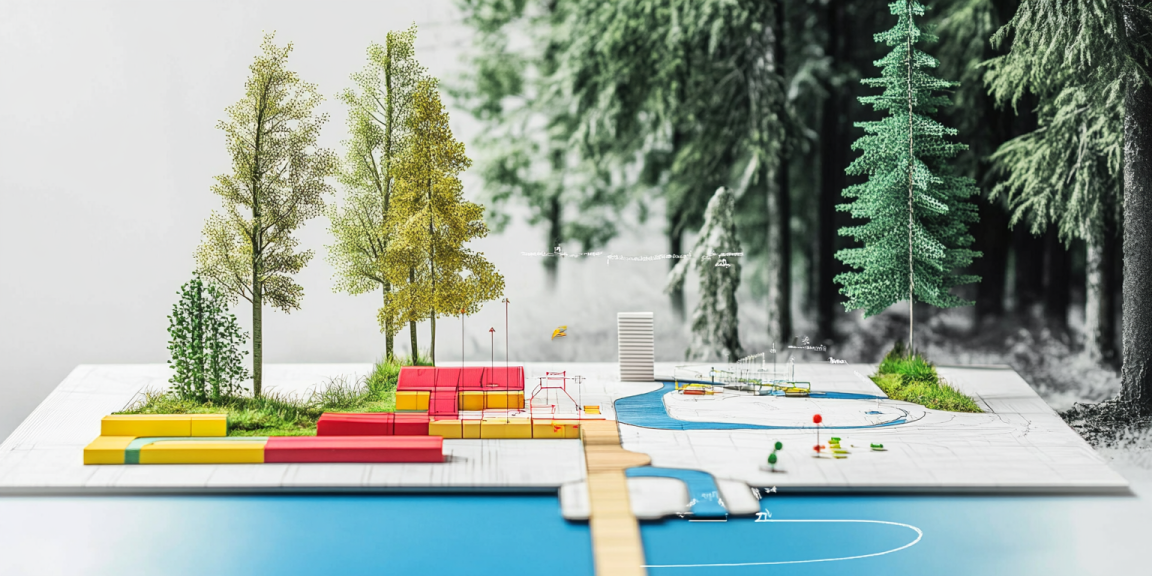As technology continues to evolve, the boundaries of user experience (UX) design are being pushed…

The digital world continues to evolve, and website design is no exception. Staying ahead of the curve in 2024 requires embracing trends that balance functionality, aesthetics, and user experience. Whether you’re a business owner, designer, or enthusiast, these trends will help you create visually stunning and user-friendly websites that captivate and convert.
Here are the latest website design trends in 2024 and insights into how you can implement them effectively.
1. Immersive Scrolling Experiences
Scrolling has evolved from a basic interaction to an engaging storytelling tool. In 2024, immersive scrolling experiences are taking center stage.
Features:
- Parallax Effects: Layers move at different speeds to create depth.
- Horizontal Scrolling: Adds a unique navigation twist.
- Interactive Animations: Elements respond dynamically to user inputs.
How to Implement:
Use immersive scrolling to guide users through a narrative, whether it’s showcasing a product journey or telling your brand story. Popular tools like ScrollMagic or GSAP can help achieve smooth animations.
2. Minimalism with a Twist
Minimalist design remains timeless, but in 2024, it comes with creative twists. Think bold typography, vibrant accents, and unexpected layouts.
Features:
- Asymmetrical grids.
- Large, attention-grabbing fonts.
- Vibrant or gradient color pops against neutral backgrounds.
How to Implement:
Focus on clarity and simplicity while adding an element of surprise. For instance, pair a clean design with oversized, artistic typography to make your site stand out.
3. AI-Powered Personalization
Personalization has been a buzzword for years, but with AI, it’s now more sophisticated than ever. Websites adapt content, visuals, and layouts dynamically based on user behavior and preferences.
Features:
- Customized product recommendations.
- Dynamic content changes based on location or time of day.
- Predictive search functionality.
How to Implement:
Integrate AI tools like Dynamic Yield or Segment to deliver hyper-personalized experiences that feel tailor-made for each visitor.
4. Dark Mode with Enhanced Aesthetics
Dark mode continues to be popular, but 2024 brings enhanced designs with better contrast, vibrant colors, and creative uses of light and shadows.
Features:
- Neon highlights.
- High-contrast text for readability.
- Subtle gradients for depth.
How to Implement:
Offer dark mode as an option with a toggle feature, allowing users to switch based on their preferences. Use tools like Dark Mode Toggle for seamless integration.
5. Advanced Microinteractions
Microinteractions add a layer of delight to websites by providing subtle feedback to user actions. In 2024, they’re more intricate and functional.
Features:
- Button hover effects.
- Animated icons and checkboxes.
- Seamless progress indicators.
How to Implement:
Focus on microinteractions that enhance usability. For example, use animated buttons to indicate loading processes or transitions, ensuring they are smooth and intuitive.
6. Inclusive and Accessible Design
Accessibility is no longer optional. In 2024, inclusive design practices ensure websites cater to diverse audiences, including those with disabilities.
Features:
- High contrast and resizable text.
- Keyboard-friendly navigation.
- ARIA (Accessible Rich Internet Applications) labels for screen readers.
How to Implement:
Follow WCAG 2.2 guidelines and use tools like Wave to test accessibility compliance. This ensures your site is usable for everyone.
7. Elevated E-commerce Experiences
E-commerce websites are embracing more immersive and intuitive designs to boost conversions.
Features:
- 360-degree product views.
- Augmented reality (AR) for virtual try-ons.
- One-click checkout processes.
How to Implement:
Partner with platforms like Shopify AR or Zakeke to integrate AR features and create a seamless shopping journey.
8. Bold Typography and Custom Fonts
Typography is a powerful tool for conveying brand identity. In 2024, bold and custom fonts are stealing the spotlight.
Features:
- Oversized headlines.
- Variable fonts that adapt to user behavior.
- Playful or experimental font styles.
How to Implement:
Invest in custom typography or explore free resources like Google Fonts for unique font pairings that align with your brand personality.
9. Sustainable Web Design
With growing environmental awareness, websites are designed with sustainability in mind.
Features:
- Lightweight design to reduce energy consumption.
- Optimized images and videos for faster load times.
- Green hosting solutions.
How to Implement:
Use tools like EcoGrader to assess your site’s environmental impact and make it more sustainable.
10. Motion Graphics and 3D Elements
3D elements and motion graphics are becoming more mainstream, adding depth and interactivity to websites.
Features:
- Animated logos.
- Interactive 3D product models.
- Cinematic scrolling effects.
How to Implement:
Use software like Spline or LottieFiles to incorporate 3D graphics and animations seamlessly into your design.
11. Voice User Interfaces (VUIs)
With the rise of smart devices, websites are integrating voice interactions to improve accessibility and convenience.
Features:
- Voice-activated search.
- Hands-free navigation.
- Integration with virtual assistants.
How to Implement:
Add voice-enabled features using APIs like Web Speech or Amazon Alexa Skills Kit.
12. Seamless Integration of Video Content
Video remains a dominant medium for storytelling and engagement. Websites in 2024 are designed to showcase video content more prominently.
Features:
- Background video loops.
- Short-form video snippets for product demos.
- Interactive video players.
How to Implement:
Optimize videos for fast loading and consider autoplay options with sound off to avoid disrupting the user experience.
13. Nostalgia-Driven Design
Retro aesthetics are making a comeback, combining vintage elements with modern design techniques.
Features:
- Pixel art.
- Retro fonts and color schemes.
- Old-school animations like glitch effects.
How to Implement:
Incorporate nostalgic elements sparingly to maintain a balance between modern functionality and vintage appeal.
14. Hyper-Personalized Dashboards
For platforms with user accounts, hyper-personalized dashboards enhance usability and engagement.
Features:
- Customizable layouts.
- AI-generated recommendations.
- Dark and light mode options.
How to Implement:
Leverage user data to create dashboard experiences that adapt dynamically to preferences and habits.
15. Data-Driven Design Decisions
Analytics and user behavior data are now central to website design strategies.
Features:
- Heatmaps to track clicks and scrolling behavior.
- A/B testing for design elements.
- Real-time data visualization.
How to Implement:
Use analytics tools like Hotjar or Google Analytics to collect data and refine your designs accordingly.
Why These Trends Matter
Adopting the latest trends keeps your website modern and competitive. More importantly, these innovations improve user experience, helping you engage your audience effectively and achieve your business goals.
Wrapping It Up
The website design landscape in 2024 is all about creating immersive, personalized, and sustainable experiences. By embracing these trends, you can craft websites that not only look great but also function flawlessly for your users.
As technology and user expectations evolve, staying updated with these trends ensures your website remains relevant, impactful, and memorable.



